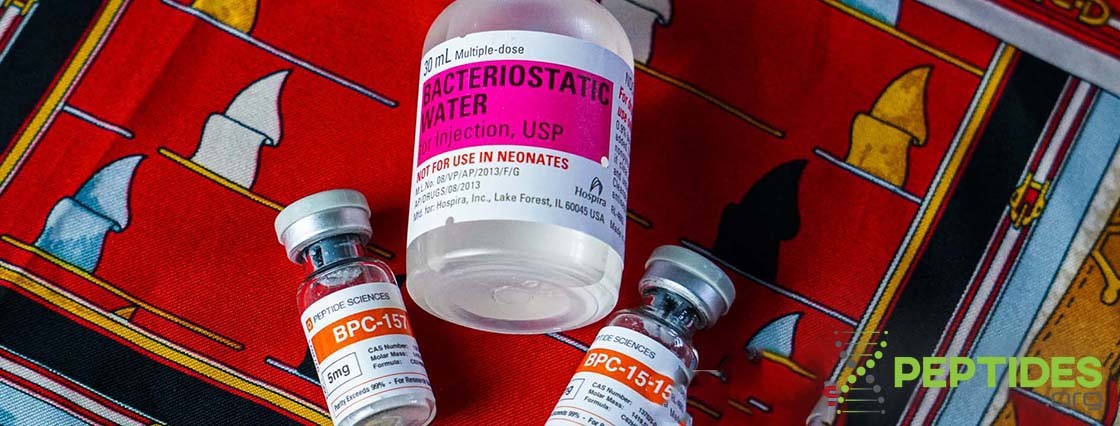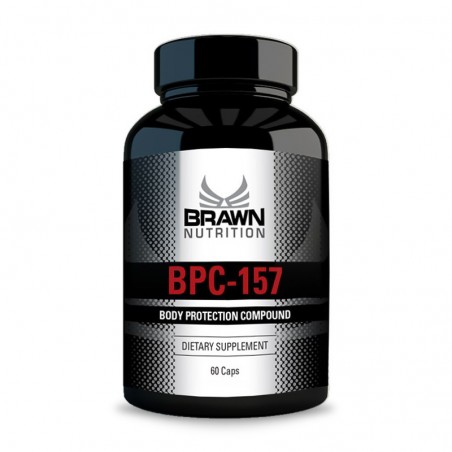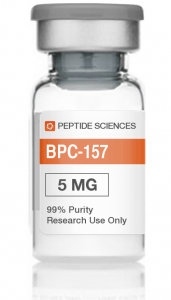
August 15, 2024
Body Protective Compound-157 Boosts Alkali-burn Injury Healing In Viv Dddt
Exactly How Bpc-157 Works In The Body Abdominal compartment syndrome appeared as a numerous occlusion disorder that can not be stayed clear of unless therapy was offered. On a regular basis, mutual changes in the abdominal, thoracic, and mind tooth cavities (Depauw et al., 2019) rapidly appeared as components of vascular failure. Therefore, in the rats with intra-abdominal hypertension, multiorgan failing (i.e., intestinal, mind, heart, liver, and kidney lesions), portal and caval high blood pressure, aortal hypotension, intracranial (exceptional sagittal sinus) high blood pressure, and generalised thrombosis appeared. This brought about generalised tension, generalized Virchow triad presentation, and extreme ECG disturbances; therapy had the ability to provide appropriate settlement (i.e., activation of security pathways to reestablish blood flow), both quick and continual, as demonstrated with BPC 157 treatment. As a prime and functional confirmation, rats with major vessel ligation and occlusion, in either artery and/or capillary, and either peripherally or centrally, displayed a similar syndrome (Vukojevic et al., 2018; Gojkovic et al., 2020; Kolovrat et al., 2020; Gojkovic et al., 2021a; Knezevic et al., 2021a; Knezevic et al., 2021a; Knezevic et al., 2021b). Hence, there might be a shared failure to respond, resulting in natural vascular failure upon major vessel occlusion (ligation) (Vukojevic et al., 2018; Gojkovic et https://australia.direct-sarms.com/product-category/bpc-157/ al., 2020; Kolovrat et al., 2020; Gojkovic et al., 2021a; Knezevic et al., 2021a; Knezevic et al., 2021a; Knezevic et al., 2021b) as well as upon the induction of high intra-abdominal stress, with all vessels compressed.Gastric Pentadecapeptide Bpc 157 As An Effective Treatment For Muscle Crush Injury In The Rat
- While these studies recommend that BPC-157 might have anti-tumor buildings, much more extensive study, including medical tests, is necessary to completely recognize its potential and systems of activity in cancer cells therapy.
- Widely discussed because of its popularity, this advancement has actually opened up a variety of viewpoints and discussions.
- BPC 157 functions as a membrane layer stabilizer and complimentary extreme scavenger and decreases leaking gut disorder, as shown in stomach system cytoprotective studies (Park et al., 2020).
- Nevertheless, the pharmacokinetic parameters after repeated IM management altered a little compared to those observed after a solitary IM shot, with a small reduction in Cmax and t1/2 and a rise in Tmax.
- Consistently, with intensifying (gotten with L-NAME administration) and amelioration (with L-arginine), either L-arginine-amelioration dominates (i.e., esophageal and gastric lesions attenuated) or they counteract each various other (L-NAME + L-arginine) with an impact that was more reversed toward a marked useful effect by the addition of BPC 157 (L-NAME + L-arginine + BPC 157).
Bpc 157's Advantages: Past The Ban
Of note, pylorus sphincter failure was believed to mirror lower esophageal sphincter failure [17,18,20-23] This was better in addition enhanced in rats that went through BPC 157 treatment, and pressure in the pyloric sphincter is additionally rescued, which is a vital point currently reported. As stated, BPC 157 treatment together with an NO-synthase (NOS) blocker, L-NAME, squashed any type of effect of L-NAME that would or else considerably escalate the routine course. Constantly, with intensifying (obtained with L-NAME management) and amelioration (with L-arginine), either L-arginine-amelioration dominates (i.e., esophageal and stomach lesions attenuated) or they combat each other (L-NAME + L-arginine) with a result that was more turned around toward a marked advantageous impact by the enhancement of BPC 157 (L-NAME + L-arginine + BPC 157). The pet dogs were acclimatized to the housing problems for at the very least 7 days before the initiation of the experiment. All pets were treated humanely, and all research studies were executed according to great research laboratory method (GLP) (China Fda, CFDA) standards for nonclinical laboratory studies of medications provided by the National Scientific and Technological Committee of individuals's Republic of China. Pet care and welfare were carried out based on the Guide for the Care and Use of Research Laboratory Animals. The metabolism of peptides and proteins usually starts from the activity of endopeptidase and afterwards goes through multi-step enzymatic destruction to generate the last metabolite amino acids, which enter the amino acid swimming pool in vivo (Vugmeyster et al., 2012). Generalized edema and blockage (a, b, c, d) with a boosted variety of karyopyknotic cells were discovered in the cortex (a, b) that was substantially various from the cortex area in BPC 157-treated rats (A, B). In control rats, intracerebral hemorrhage was discovered in infratentorial area (d), mostly in cerebellopontine angle/area (c) with generalized edema and congestion of central nervous system, while no hemorrhage (C) and only moderate edema was located in treated pets, mainly at 50 mmHg intra-abdominal pressure (D). ( HE; magnifying × 200, scale bar 100 μm (a, A, b, B, d, D); zoom × 100, scale bar 200 μm (c, C)). Body-protective substance (BPC) 157 demonstrates protective results versus damage to different organs and tissues. For future scientific applications, we had previously established a solid-phase synthesis procedure for BPC157, verified its organic task in various injury versions, and completed preclinical security evaluations. This research aimed to examine the pharmacokinetics, discharging, metabolic rate, and distribution profiles of BPC157. The primary metabolite, [3H] proline (M1), accounted for 4.96% (lady) and 3.93% (male) of the bile examples (Figure 5C). Small amounts of [3H] BPC157 were discovered in feces, representing 0.63% (lady) and 2.26% (male) of the overall fecal radioactivity. The tritium water material was 30.1% (female) and 29.3% (man), and the content of [3H] proline (M1) was greater, representing 20.7% (lady) and 30.2% (man) of the complete radioactivity (Number 5D). The materials of other metabolites in feces were all less than 0.06% of the administered amount, and it was impossible to execute structural identification as a result of the exceptionally reduced web content. These results suggest that BPC157 was rapidly metabolized into reduced levels of a variety of little peptide fragments, ultimately causing a single amino acid represented by [3H] proline, which got in the typical amino acid metabolic rate and discharging path in the body. Nonetheless, BPC-157 did not advertise either NIH3T3 or HaCaT cell proliferation (data disappointed). HUVECs were subjected to BPC-157 (1 μg/ mL, 5 μg/ mL, and 10 μg/ mL) for two days and afterwards assessed by circulation cytometry. Outcomes revealed that BPC-157 obviously reduced the cell number in the G0/G1 stage in a dose-dependent fashion compared with the number in the control group (Number 4B). These searchings for indicated that BPC-157 might regulate the cell stability and influence HUVEC cell cycle departure in the G0/G1 stage. The sequence does not exist in nature, however instead has actually been duplicated and manufactured by researchers from the protective healthy proteins located in tummy cells. Ilic, S., Brcic, I., Mester, M., Filipovic, M., Sever, M., Klicek, R., et al. (2009 ). Undermined Stomach Ulcers, Seizures, Mind Lesions, Hepatomegaly, Fatty Liver, Failure of Liver Glycogen, Profound Hypoglycemia and Calcification in Rats. The pet research was assessed and approved the Ethics Committee of Institution of Medicine Zagreb. Keremi, B., Lohinai, Z., Komora, P., Duhaj, S., Borsi, K., JobbaGy-Ovari, G., et al. (2009 ). As we remain to witness the advancement of health and wellness and wellness therapies, it's vital to stay enlightened and advocate for secure yet progressive health care options.BPC-157 and TB-500: Inflammation, Tissue Damage, and More - The Portugal News
BPC-157 and TB-500: Inflammation, Tissue Damage, and More.
Posted: Tue, 19 Sep 2023 07:00:00 GMT [source]
Does BPC 157 boost muscle mass growth?
More blood vessels suggest enhanced blood circulation, nutrient supply, and removal of waste items from muscular tissue cells, all of which are advantageous for muscle building. That claimed, it''s crucial to bear in mind that while BPC 157 does advertise muscle mass growth, its major duty is in healing and minimizing inflammation.


Social Links